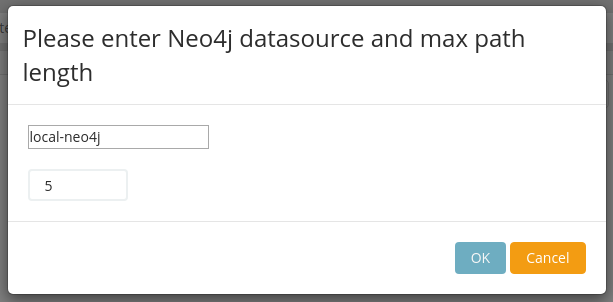

Why so small? To illustrate how even a small number of nodes and relationships can have a large number of unique paths through the graph. The schema visualization is shown in f igure 3 , and the source Cypher statements are on github. It was generated using a Neo4j apoc procedure that generates a random graph using the Erdos-Renyi model. The graph is intentionally small, containing only 50 :Node labeled nodes, and 70 :PARENT_OF relationships. The example graph consists of nodes with a :Node label, that are related to each other by a :PARENT_OF relationship, each with a unique node_id field. Let’s use a simple acyclic graph structure to illustrate how even a small set of data can result in a significant amount of processing needed for visualization. “Yeah! Query!!! 😺” What Is the Neo4j Browser Graph Visualization Really Displaying? That’s a much bigger topic! The Neo4j Browser and What It’s Doing 50 Nodes -> 70 Relationship: “Arrgh! Query!!! 🙀” vs. What the post does not take into consideration the larger context of concurrency, resource and database utilization, or query design.


You can check out the user interface guide here. It has query history, saving favorites, multi-statement execution, a variety of output formats, browser guides available through the :play command, and is continuously being improved ( hint: check out the :edit command if you haven’t already). The utility of the Neo4j Browser for developers cannot be understated and it will continue to be the main development interface for Neo4j users. The browser delivers an easy to use, metadata supported environment for developing Cypher queries with the interactive, force-directed graph visualization being the most popular output. The Neo4j Browser is a developer tool, and is the number one interface used to write Cypher queries and interact with a Neo4j database. Your “mileage may vary” as the Neo4j Browser is continually being improved. Note: The content of this post is relevant to the Neo4j Browser version 4.2.0 as of January, 2021. When writing a query, be sure that it doesn’t match any cycles, or you can experience unpleasant surprises.Īssume the following sample graph and simple query: CREATE ( a: Node ) WHERE length(nodes(p)) = length( a Cypher query run in the Neo4j Browser may not return in a reasonable amount of time, what is happening, and what you can do about it. There is one common performance issue our clients run into when trying their first Cypher queries on a dataset in Neo4j.


 0 kommentar(er)
0 kommentar(er)
